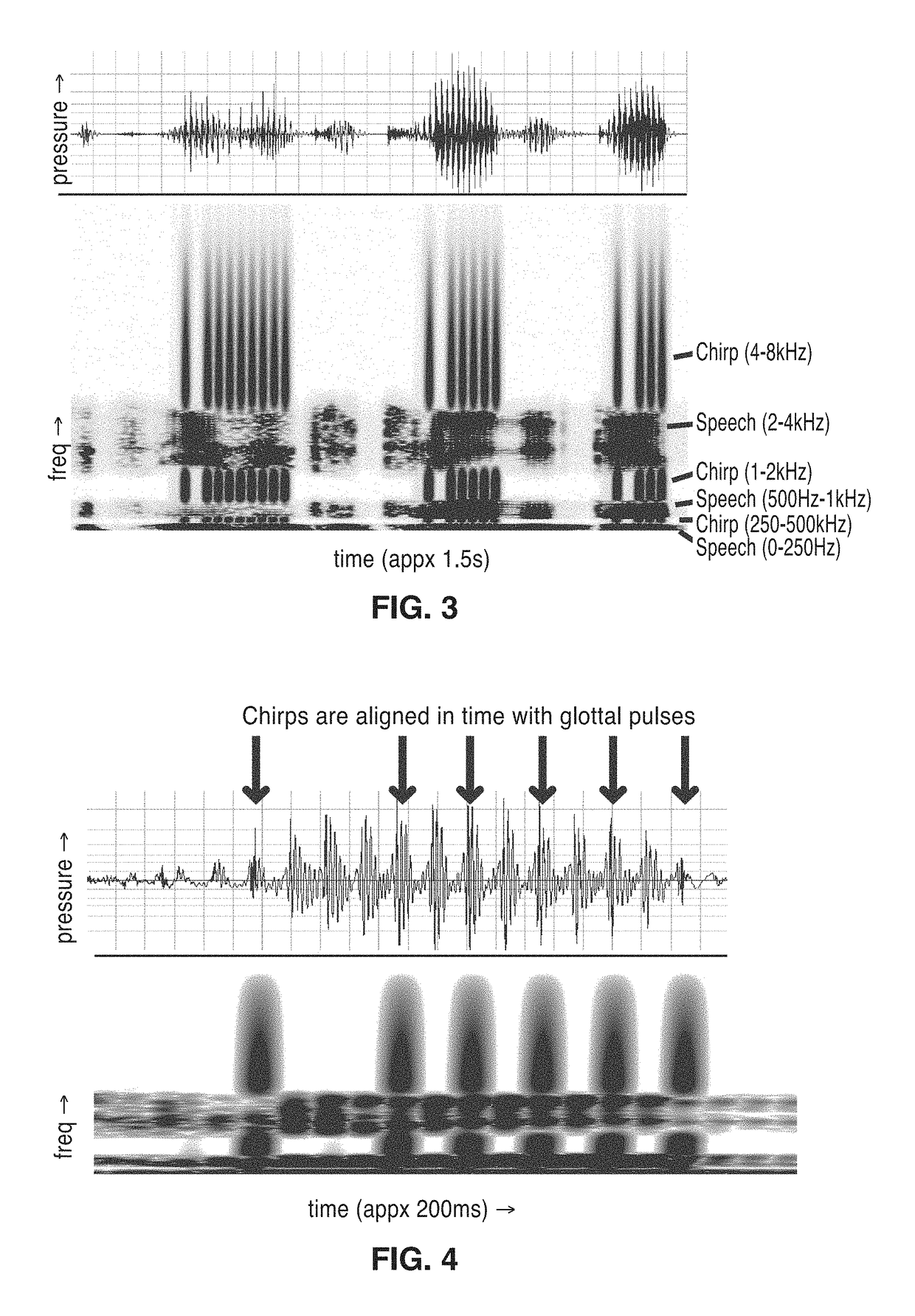Frequency-multiplexed speech-sound stimuli for hierarchical neural characterization of speech processing
a hierarchical neural and speech processing technology, applied in the field of producing frequency-multiplexed chirpspeech stimuli, can solve the problems of not being adopted by clinicians nor reimbursed, unable to analyze the relationship between different levels of processing, and taking too long to implement in the clinic. to achieve the effect of improving procedures
- Summary
- Abstract
- Description
- Claims
- Application Information
AI Technical Summary
Benefits of technology
Problems solved by technology
Method used
Image
Examples
example 1
[0084]In order to demonstrate the technology, a “Functionally Integrated Speech Hierarchy” (FISH) assessment comprising a new speech stimulus corpus and advanced EEG analysis procedures was performed. For this illustration, 16 subjects with normal hearing and one subject with impaired hearing were recruited. EEG was acquired at 16 kHz with 20 channels distributed across the scalp while subjects listened attentively or watched a silent movie.
[0085]Sound attributes and analyses were jointly designed on mathematical and physiological principles to provide simultaneous but independent characterization of different levels of the ascending auditory system. The FISH assessment included multiple simultaneous measurements of the following:
[0086]1) Auditory brainstem response (ABR) to the first, last, and / or all chirps in each train. The ABR assesses neural responses from the auditory nerve through the inferior colliculus (IC), the most important integrative structure in the ascending auditor...
example 2
[0093]To further demonstrate the technology, neural responses to the same frequency-multiplexed chirp-speech stimuli were performed from a group of 17 subjects. In this example, the chirp train component was an isochronous 41 Hz series of “cochlear chirps”. These chirps compensate for the traveling wave velocity in the basilar membrane, resulting in a more synchronized neural response and larger auditory brainstem response (ABR) as well as a potentially more robust middle latency responses (MLR) and long latency responses (LLR).
[0094]FIG. 5 is a graph showing auditory brainstem response (ABR) of a test subject that was presented the frequency-multiplexed chirp-speech stimulus of Example 1. FIG. 6 is a graph of the auditory steady state response (ASSR). FIG. 7 shows middle-latency response (MLR) and FIG. 8 shows the long-latency response (LLR). FIG. 9 shows alpha power at 12 Hz over the parietal lobe, demonstrating how the stimulus can be used in conjunction with high-level perceptua...
example 3
[0095]Auditory Steady State Response (ASSR) responses for simultaneous chirp-speech stimulus signals were taken to characterize how well speech information is passed from lower to higher levels in the auditory system. FIG. 10 shows ASSRs from an ancillary demonstration where two independent chirp-speech signals were presented dichotically (simultaneously with different signal in each ear). In this case the pitches and therefore chirp rates were different between ears: 38 Hz and 43 Hz. Chirps and speech were frequency-multiplexed in opposing bands between the ears, such that a given band contained chirps for one ear and speech for the other.
[0096]From the discussion above it will be appreciated that the technology described herein can be embodied in various ways, including the following:
[0097]1. A method for generating synthetic sound-speech stimuli for analyzing electrical brain activity, the method comprising: (a) providing at least one speech corpus having a plurality of utterance...
PUM
 Login to View More
Login to View More Abstract
Description
Claims
Application Information
 Login to View More
Login to View More - R&D
- Intellectual Property
- Life Sciences
- Materials
- Tech Scout
- Unparalleled Data Quality
- Higher Quality Content
- 60% Fewer Hallucinations
Browse by: Latest US Patents, China's latest patents, Technical Efficacy Thesaurus, Application Domain, Technology Topic, Popular Technical Reports.
© 2025 PatSnap. All rights reserved.Legal|Privacy policy|Modern Slavery Act Transparency Statement|Sitemap|About US| Contact US: help@patsnap.com



